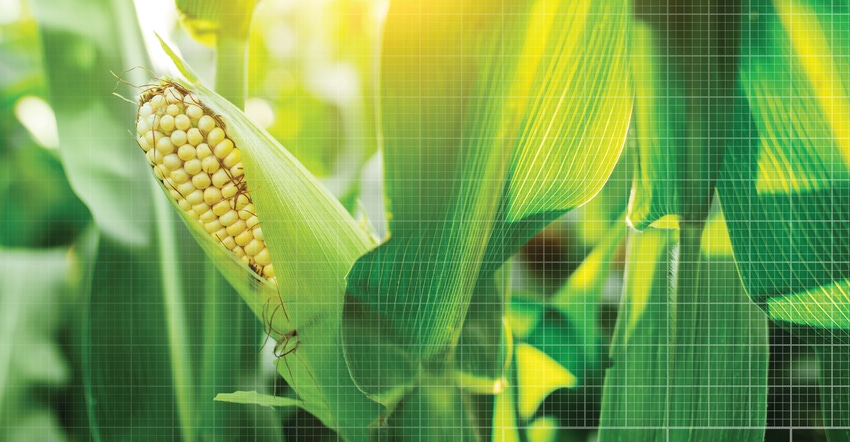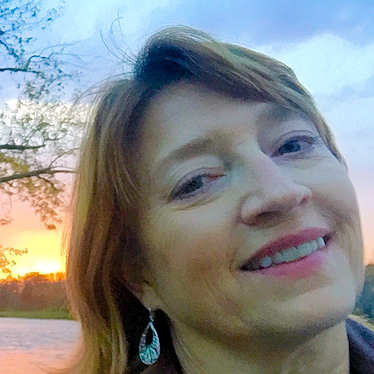
Yield and moisture variability was extreme during the harvest of 2014 — the year that fourth-generation farmer Tim Malterer became convinced that modeling pays off.
For his corn, Malterer considered soil, moisture and other conditions when calculating that he’d need to add 20 to 30 pounds of N per acre. But when he turned to Nitrogen Advisor from The Climate Corp., the software recommended adding 40 to 50 pounds.
Malterer applied those amounts to different areas during his second sidedressing. In areas where he followed the software advice, yields far outweighed the added expenses, he says.
Now, he’s using crop modeling on every one of his fields in south-central Minnesota as a management tool for optimizing inputs and yield.
Using models — which are mathematical simulations — not only protects the environment, but is also a sound business practice, says Malterer, who farms with seven families.
“If we’re going out there and applying all kinds of extra nitrogen, that’s an added expense to our bottom line that isn’t giving us a return,” he says.
On a quest for the best crop models to improve financial and environmental performance are agribusinesses including Agronomic Technology Corp., The Climate Corp., Encirca Services from DuPont Pioneer, Bayer and Farmer’s Edge.
“Crop models are now commercially available to help farmers make better management decisions in their fields,” says David Mulla, professor in the Department of Soil, Water and Climate Department and director of the Precision Agriculture Center, University of Minnesota.
“Modeling helps to integrate both climatic conditions to give you a better idea of how fast crops are growing, and what the yield potential might be. Then you can use the results to make better decisions about management of the crops so that you can get a better yield.”
Mulla points to Adapt-N, a software tool that integrates 13 models. Developed by Cornell University, it incorporates cultivar, planting date, yield potential and more to provide accurate nitrogen diagnostics and recommendations.
It’s proven to boost profits and cut N losses during five years of on-farm trials, says Steve Sibulkin, CEO of Agronomic Technology Corp., which operates Adapt-N.
Used in 38 states, Adapt-N set the standard, with the most advanced features on the market: full variable-rate recommendations, nitrogen stabilizers and more, he says. Adapt-N is the first N tool with performance claims —including nitrogen-use efficiency gains and grower profitability of $30 an acre — validated by Nutrient-Star, an independent reviewer of nutrient management tools.
In 2016, the company launched N-Insight, an instant nitrogen field diagnostic with deals in place to cover millions of acres in 2017.
“We don’t compete with ag retailers by marketing it to their clients,” Sibulkin says. “We use their brands, customize for their products, plug it into their platforms and enable their agronomists.”
To reduce risk of application errors and yield loss, it’s important to use only models proven for accuracy, he says.
Global collaboration in modeling
The Climate Corp. says digital agriculture and models can create enormous value for growers by pulling together data — whether from farmers’ knowledge about fields, weather monitoring, soil or imagery.
To accelerate such innovation and drive it to growers, Climate is extending its software infrastructure into a centralized platform, where other innovators can develop technology. By opening its FieldView platform to innovators, Climate aims to collaborate with many others globally.
Growers can get additional data and insights about fields, and now subfields, by plugging into Climate’s digital ag space, says Sam Eathington, chief scientist.
He says modeling and digital agriculture start with assessing each farm. Farmers typically see considerable variation, which presents both a management challenge and an opportunity, Eathington says.
“Bringing that all into one spot really lets them address this variability in their fields and start getting at this yield gap that exists between genetic potential and what they’re achieving in the field,” he says.
Eathington noted the National Corn Growers Association 2016 yield contest was won by a Georgia farmer who harvested 521 bushels per acre. The national average is 168, USDA says.
Models and agronomic insights can help close that yield gap, Eathington says.
Climate, a Monsanto subsidiary, is developing the industry’s first in-field sensor network, including a soil nitrate sensor that will feed into models in the FieldView platform. Also in development is a fertility solution that will provide insights for variable rates of other essential nutrients — potassium and phosphorus — to help farmers make decisions.
Climate’s in-field sensor network will collect an unprecedented amount of field data at a more frequent, granular level, Eathington says.
“It will create a digital ecosystem to help farmers unlock productivity and see a good return on their investments,” he says. “We’re going to see some new insights and information that are going to help direct agriculture like we’ve never seen before.”
Real-time analytics with less work
Malterer says models give real-time analytics of what’s happening in fields without the need for longhand math.
“I know that there are equations out there, and the ability to calculate how much mineralization is happening per percent of organic matter and how much nitrogen is mineralized or leached,” Malterer says.
“The modeling allows us to do that on a very broad scale and to do all the calculations all the time, rather than an individual having to say, ‘OK, this field got a quarter-inch of rain, and how did that affect the mineralization out there?’
“If we had to do that longhand, we’d never do it. There are not enough hours in the day. But when we can put data into a computer model, and it can continually spit out that information to us, it’s a huge benefit.”
Automating and simplifying data collection and syntheses for growers is key, Eathington says.
Whether data come from Malterer’s equipment, field management practices or new sensor technologies in development, he can connect it all into one platform. That delivers more precise insights from his Climate FieldView tools, he says.
Malterer, who raises corn, soybeans and cattle in Janesville, Minn., says he’s for anything that collects data without manual entry.
“We have our tractor and planters linked to Climate through the FieldView Drive,” he says.
“As we plant, it collects data on what hybrid we planted on what acre, along with the relative maturity of that hybrid. It puts in there what that hybrid is doing, when it was planted, how much nitrogen it needs, along with the yield goals. And then every time it rains, it knows how much it rained on each field. As we go through the process, it’s always updating temperature, moisture and all of that information to give us a model as far as how much nitrogen they expect on our fields.”
Models forecast success
Another leader in modeling is Encirca Services from DuPont Pioneer.
“Crop models can assist farmers with timely management decisions by accurately simulating and predicting crop growth and development,” says Travis Kriegshauser, Encirca senior services manager.
“Crop models also mean that the sensor data that farmers collect from their equipment and other management records can be put directly to work. These data, in combination with technologies like aerial imagery and field sensors, will improve the accuracy of crop models.”
Specialized models can forecast success relative to key management decisions for crops, he says. The models enhance farmers’ understanding of crop-related processes that drive productivity: water, soil, N fertility and genetics, Kriegshauser says.
Encirca’s team of data scientists, agronomists and crop modeling experts are mining Pioneer’s wealth of remote sensing, agronomic and genetic data for model development. This continually improves accuracy of crop and soil models as well as stewardship.
“These efforts are revolutionizing the next generation of service offerings from DuPont Pioneer and Encirca Services,” Kriegshauser says.
He pointed to these offerings:
The Encirca Nitrogen model is highly specialized and industry-proven. It incorporates proprietary soil maps, growers’ data-driven “Decision Zones” and DTN’s on-farm Ag Weather station data networks and forecasts.
The Encirca Nitrogen Premium- and Pro-level services allow growers to enroll fields and use historical yield data to get real-time and forecasted soil nitrogen estimates for the entire growing season.
The Encirca Nitrogen Premium-level consulting service has teams of certified agents who partner with customers for field-by-field recommendations and customized variable-rate nitrogen prescriptions.
25 years of satellite imaging and climate data
Field profiles combined with crop models serve as a risk-managing tool that will grow tremendously in usefulness, predicts Ole Peters, digital farming technology lead at Crop Science, a division of Bayer.
With the 2015 acquisition of ProPlant, a world leader in crop disease and pest modeling, Bayer acquired the base of what’s now a set of 35 different crop disease and pest models. And that’s growing.
Bayer is collaborating with the University of Hamburg on research into technologies to deliver hyper-local weather and soil data into models. New satellite technology, along with field sensor networks, connected machines and robots will provide more precision for every field zone.
“We see a huge value in generating better data for the farmer that drive the models,” Peters says.
With quantitative yield models, he says, a farmer gets a risk indicator for every single acre showing daily updated statistics on yield response that he can expect for investments in irrigation, seeds, fertilizer and crop protection.
This allows a farmer “to adjust operations on transparent insights rather than gut feeling,” Peters says.
Models need better traction with farmers
Crop modeling has answers for real-life problems, say researchers at Iowa State University.
Though farmers could benefit greatly from individualized yield projections, many aren’t getting much out of models because they’re mostly used by researchers, says Sotirios Archontoulis, an assistant agronomy professor at ISU.
“We have work to do to reveal their potential and educate farmers on how to interpret and make use of model results,” he says. “Everything is about balancing supply and demand to maximize profits. The models can help a lot.”
In recent years, web-based tools that simplify use of models, and digital soil and weather databases that provide parameters, have become available. The potential to use crop models to address real-life practical problems is growing rapidly, he says.
Still, it will take time to educate and convince farmers that simulated data can be as good as measured data, Archontoulis says. Another challenge is determining what information is most important for farmers, he adds.
“These models are still in their infancy from a use standpoint,” agrees Mark Licht, a cropping systems agronomist with Iowa State University Extension and Outreach.
The quest continues
There is no such thing as a perfect crop model, Archontoulis and others say.
“A model is a simplified representation of a complex system,” he says. “If it were perfect, it would not be a model anymore, but reality.”
That means the quest will never end, says Candice Hirsch, assistant professor in the Department of Agron-omy and Plant Genetics, University of Minnesota.
Weather and environment are unpredictable, she says, and there will always be crop loss.
“It’s a lot of moving pieces,” Hirsch says. “We’re always learning more about how different management practices, different environmental conditions, different genotypes, different species in the landscape, all impact plant growth. The models are an iterative process. They’re not perfect now, and they probably never will be because we’re always chasing a moving target.”
Eathington says models don’t have to be perfect. What matters is whether they’re good enough to provide valuable insights to help growers make better decisions. Models improve as we get more data, learning and acreage exposed to them, he says.
“Machine learning is really expanding rapidly. As we get all this data brought together, it really unlocks opportunities for us to apply machine-learning techniques to agriculture that we could never do before,” Eathington says.
“I look out in three years and five years, and I’m sure they’ll be far more sophisticated and a lot smarter than they are today,” he says.
About the Author(s)
You May Also Like






